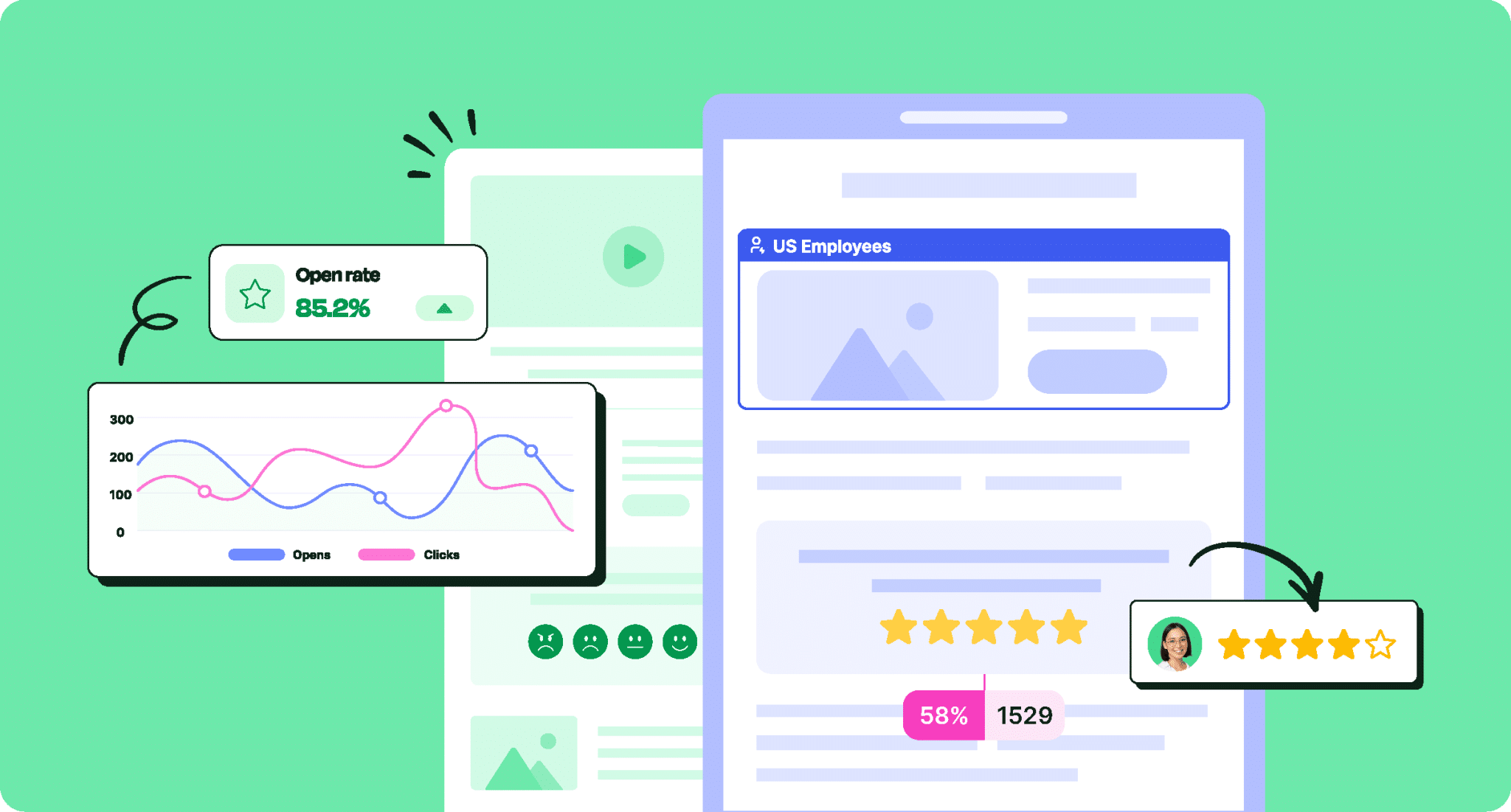You wouldn’t use a hammer to drive in a screw; so why use an external marketing tool for your internal communications? We explore using a dedicated internal marketing tool is crucial for the success of your internal communications.
Using tools like Mailchimp, Constant Contact, Campaign Monitor, Hubspot, and others may seem like a good idea for sending internal newsletters and emails. But these external marketing platforms can cause untold problems for internal communications.
The main objective of internal marketing strategy is to promote awareness of company objectives, create employee engagement, and foster brand advocacy. These objectives are difficult to meet without dedicated internal communication tools.We explore why internal communicators need to know the difference between external vs internal communication tools.
Take a self-guided tour of ContactMonkey
See how our key features can streamline your internal communications.
Take product tour

Internal Communication vs External Communication: What’s the Difference?
To make the right decision between internal vs external marketing tools, you need to understand what function they each serve. Internal communication is any information sent from employer to employee or employee to employee. This is significantly different from external communication, which involves sending information from a business to potential or existing customers.
Though some tools may seem similar for internal communication vs external communication—like an email builder—there are key differences that we’ll explore in the next section.
8 Reasons Why You Need an Internal Email Tool for Internal Communications
We’ve broken down 8 simple reasons why marketing tools aren’t serving internal communications professionals. These keys to effective internal marketing will help you identify problems so you can improve your internal communications.
- Distribution list management
- Employees unsubscribe
- Manage email sending limits
- Third-party bounce rates
- Internal vs. external communication tool metrics
- Security concerns
- Formatting disasters
- Lack of dedicated onboarding and support
Let’s take a look at each reason and see how internal communications can drive employee engagement and transform your internal marketing strategy for the better. We’ll also explore the differences between external vs internal communication tools and how they impact your ability to address your internal communication needs.
1. Directly manage your distribution lists—without needing IT
When you send a newsletter, naturally you have some group of contacts or a distribution list in mind. For instance, if you’re sending out university email marketing, you may have different lists for various university departments, faculties, and so on.
Some communication professionals prefer to send one mass newsletter to everyone, while others are savvy about segmenting their employees to create more personalized communications.
Regardless of how you send internal newsletters uploading your distribution list to a marketing platform every week is a massive pain. This is especially the case in large organizations where several new hires, promotions, and resignations/terminations could all happen in a week. Maintaining a large distribution list becomes time consuming.
How do you make distribution list management more efficient?
With ContactMonkey’s List Management feature, you can create your own custom distribution lists without needing IT for approval.
If you’re using Azure Active Directory or an HRIS, ContactMonkey can easily integrate. ContactMonkey’s HRIS integration takes out the middle man, so that you can control and segment your employee lists:
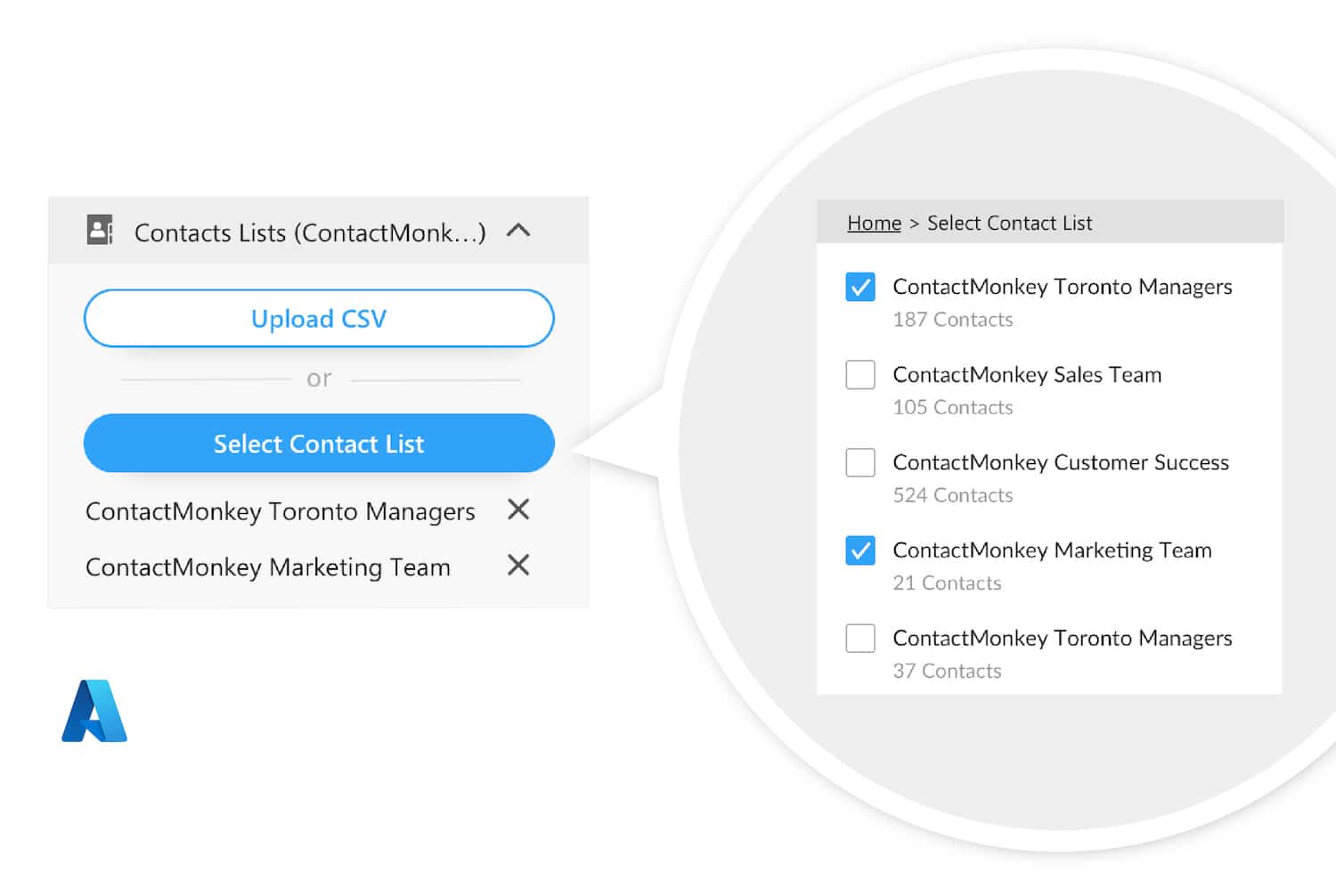
We also encourage you to plan your email communications ahead of time to ensure maximum engagement while avoiding overwhelming your employees. Use ContactMonkey’s communications calendar to plan your yearly, monthly, and weekly emails for your various distribution lists.
The Buyer’s Guide to Internal Communications Software
We did the research, so you don’t have to.
Get the guide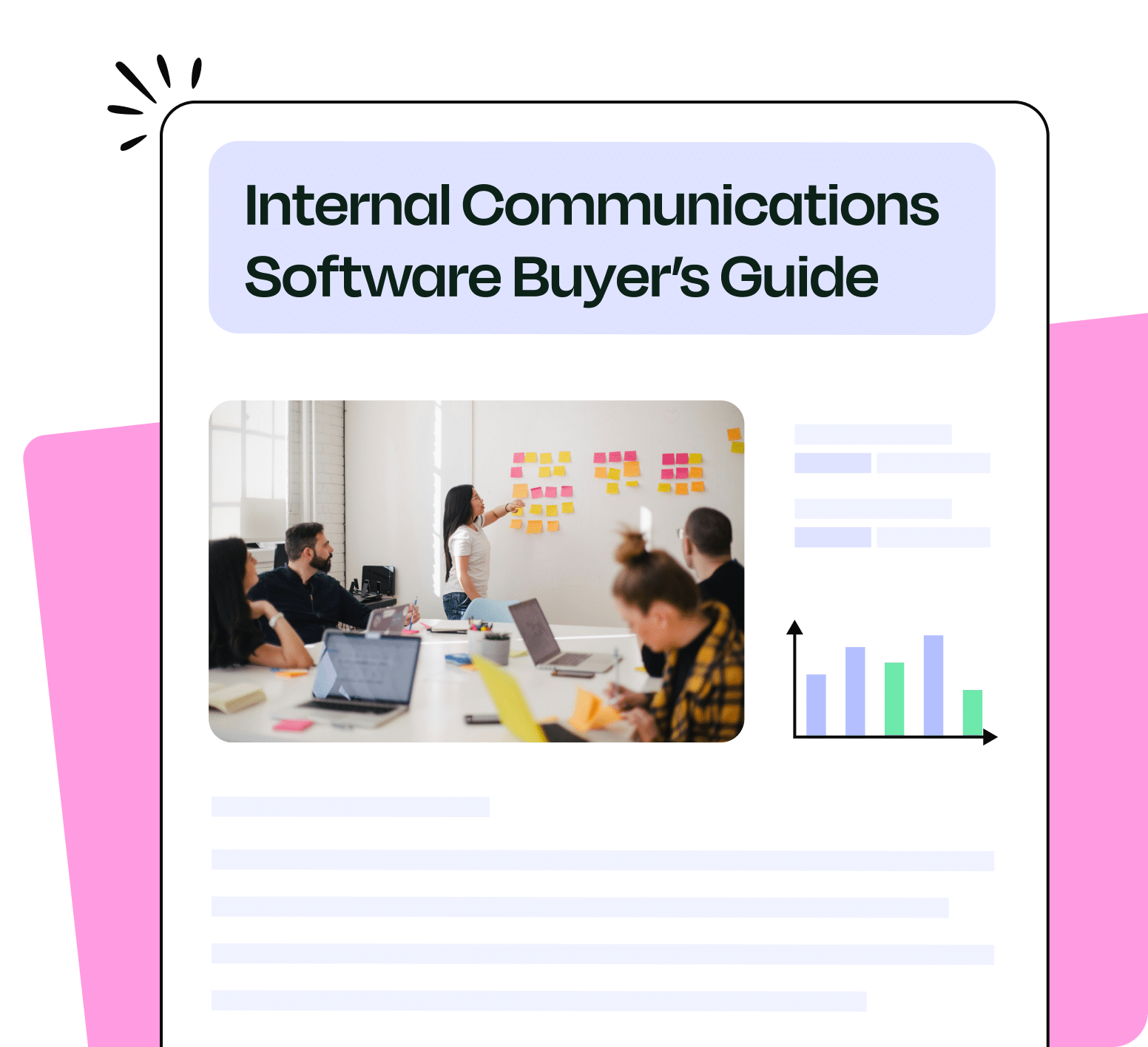
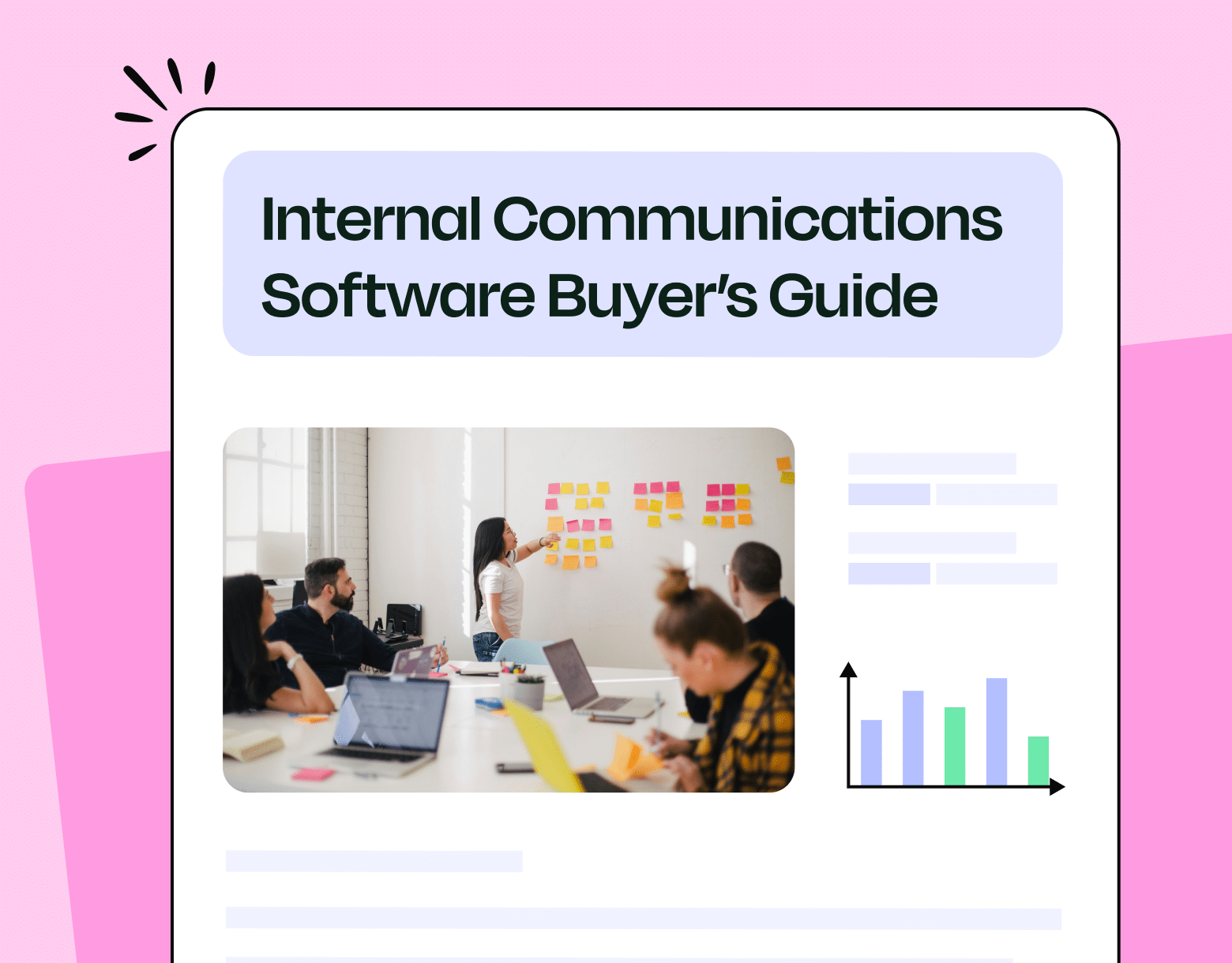
2. Prevent employees from unsubscribing from your internal emails
Visually appealing HTML newsletters make internal materials much more palatable, creating a demand for newsletter tools.
Unfortunately, marketing newsletter tools do not play nice with corporate email clients.According to CAN-SPAM, the United States spam governance act, corporate marketing tools must allow people to unsubscribe from unwanted communications.
Marketing companies don’t want to be held liable for failing to enforce CAN-SPAM guidelines. Nor do they want their customers to churn if served with an anti-spam lawsuit. To keep things simple, marketing platforms include an unsubscribe button on every email sent through their platform, regardless of the intention of the message.
The downside for internal communicators? Well, the CAN-SPAM act doesn’t actually consider internal communications as spam. Instead, they’re considered “Transactional or Relationship content,” which doesn’t require an unsubscribe option.
But marketing companies don’t care that you’re using their corporate communications marketing tool for internal email analytics. To them, an email is an email.So internal communicators using marketing platforms will still get an unsubscribe button alongside their message.
How do I prevent employees from unsubscribing from internal emails?
By using a tool designed for internal communications, you never have to worry about employees unsubscribing from important communications. Internal communication tools are designed for “Transactional and Relationship” messages. They’re pertinent to employees and won’t be blocked as the Federal Trade Commission doesn’t consider them as spam.
By using a dedicated internal email tracking tool like ContactMonkey, you can avoid the issue of spam laws and unsubscribing employees entirely. Maximize your newsletter opens every time by using an internal marketing analysis tool.If your organization has regulations around email privacy, you can use ContactMonkey’s anonymous email tracking to gather email metrics while maintaining your employees’ privacy.
3. Manage email sending limits
Outlook and Gmail are the two most popular email platforms for businesses. But for businesses with thousands or tens of thousands of employees, a major problem with these two email platforms quickly become clear: email limits.
Outlook email limits and Gmail email limits restrict your internal emails and add needless work to your email sending process. They limit how many emails you can send in a single day and how many recipients you can include on a single email send.
With ContactMonkey’s Email at Scale feature, your emails are not longer limited by your email inbox. Send as many emails as needed and include as many recipients as required without worrying about restrictions.
4. Ensure your emails don’t end up in spam folders
Your IT team rightfully wants to protect your employees from security breaches and spam. But it also means when you send internal messages using a marketing tool, they’ll be likely to bounce or appear as spam.
This is especially the case when it comes to HTML rich emails. In fact, anything with code can likely set off red flags. Firewalls quickly identify emails with lots of HTML. They also check if a sender is associated with spam. Some places automatically send all emails from external senders to the spam folder!

It also depends on how your employees respond to newsletters. If many employees mark your newsletters as spam, you’ll have a hard time passing through the spam-filter in the future. So many of your important communications will simply be blocked.
How do I prevent IT from blocking my newsletters?
The surest way to make sure your internal newsletters send properly?
Use an internal marketing tool that will send newsletters from your own email client and servers. ContactMonkey helps you accomplish this as we’re built to fully integrate with your Outlook or Gmail client, which makes us a top Mailchimp alternative as well as Hubspot alternative.
When you use ContactMonkey paired with your existing Outlook or Gmail you can have the confidence that your internal newsletters will always get delivered. You can also make sure of it through ContactMonkey’s in-depth email analytics:
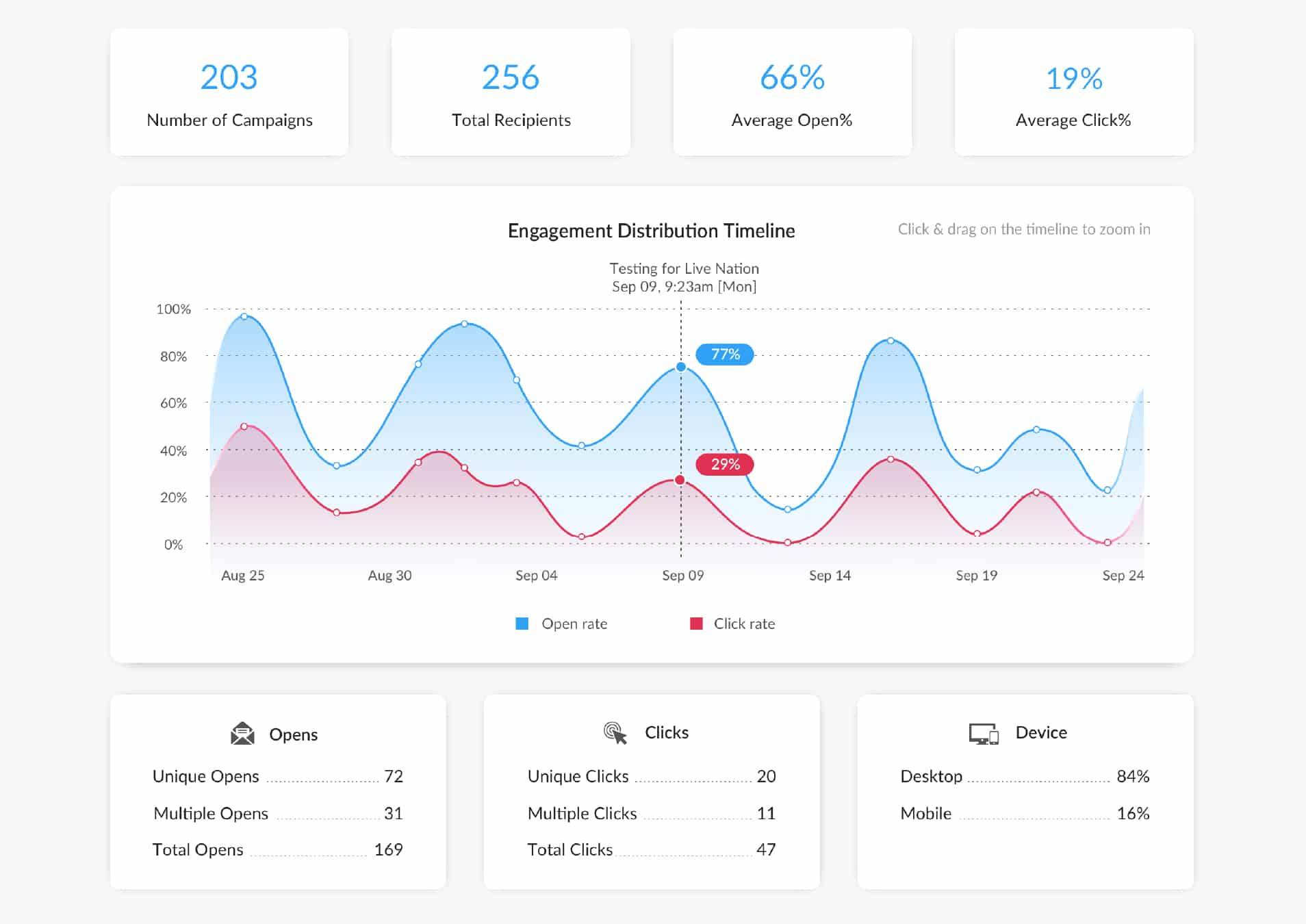
Your IT department may also be concerned with spam and phishing attacks. To protect your organization, ensure that your employees are up-to-date on their phishing awareness training, and keep sensitive employee emails on your own servers, which you can accomplish with ContactMonkey.
5. Measure email metrics for internal communications, not external
Measuring your email analytics is an essential best practice for internal communications. But when you’re using an external marketing tool, you’ll see metrics like Conversion Rate, Revenue, Unsubscribe Rate, and Bounce Rate.
Those are all important metrics when you’re trying to sell a product, or when you’re sending other commercial emails where opt-outs and spam blockers are potential obstacles. But with internal communications, you aren’t going to need any of those marketing features.
How do I focus on internal marketing KPIs?
A tool dedicated to internal communications will be able to show you more targeted metrics. ContactMonkey also allows you to take pulse surveys, use emoji reaction icons, and solicit comments from employees—all from within your internal newsletter!
So you can conduct employee surveys – from job satisfaction questionnaires to employee exit surveys—in a simpler, more engaging fashion.
Don’t let your metrics dashboard host marketing mumbo jumbo that doesn’t serve you. Instead, use an internal newsletter tool that allows you to focus on what matters: employees.
6. Mitigate security risks from marketing tools
When you use an external marketing platform for internal communications, you’re using a third party system to store and send confidential information. Everything from your employee’s full names and contact info to potentially sensitive internal news would reside within a marketing server or on the cloud.
To make matters worse, most marketing newsletter tools contain a link that allows users to view the HTML rich newsletter in a browser window.
You don’t want to use a marketing tool that was found leaking email addresses for your internal communications. Nor do you want any kind of tool that acts as a lucrative target for hackers, phishers, and scammers.
How can I reduce cybersecurity risks from marketing tools?
There are many internal communication tools that let you send emails right from your own email server. That means confidential contact information and internal news actually stays internal.
With ContactMonkey’s internal marketing tool, you can send newsletters right from your own IT-approved email domain. Your content and your distribution lists stay on your own secure servers, reducing the risk of your employees being targeted for malicious cyber attacks.
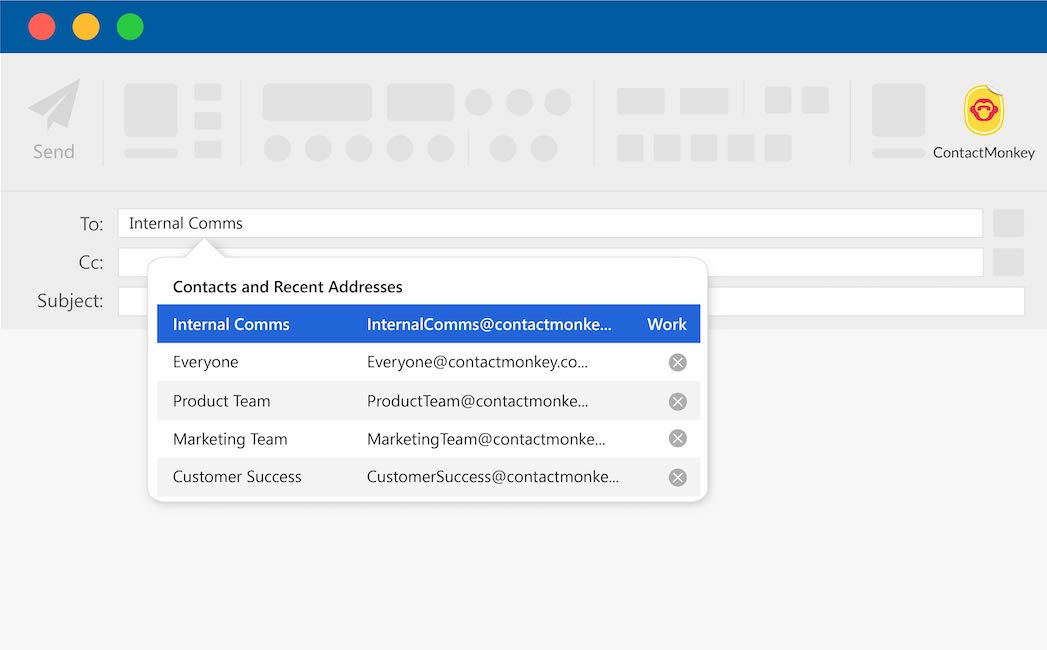
Using ContactMonkey’s List Management feature, you can create custom email lists without needing approval from IT. Your custom lists can be integrated with your Human Resource Information System (HRIS) like Workday and ADP, as well as Azure Active Directory, so they’ll automatically update when employees join and leave your organization.
Learn more about secure internal email communication.
7. Spend less time fixing Outlook formatting disasters
Since Outlook 2007, Microsoft Outlook has been using Microsoft Word to render HTML emails. Word documents render HTML differently than most other email clients, the usual result is image distortion. You may also notice:
- Ignored image padding
- Clipped images
- Rescaled or improperly sized images
- Images don’t load at all
- Background colours and images don’t show
- Animated gifs won’t work
- Inappropriate white spaces appear between lines
Although you can spend hours testing and reformatting your newsletters to make them work, you have to remember those are hours of your time you can’t get back. Imagine how many other things you could do with all that time?
With a tool like ContactMonkey, you can gather real data on how your employees are engaging with your internal communications. Our click maps feature let’s you see what parts of your email are grabbing your employees’ attention:
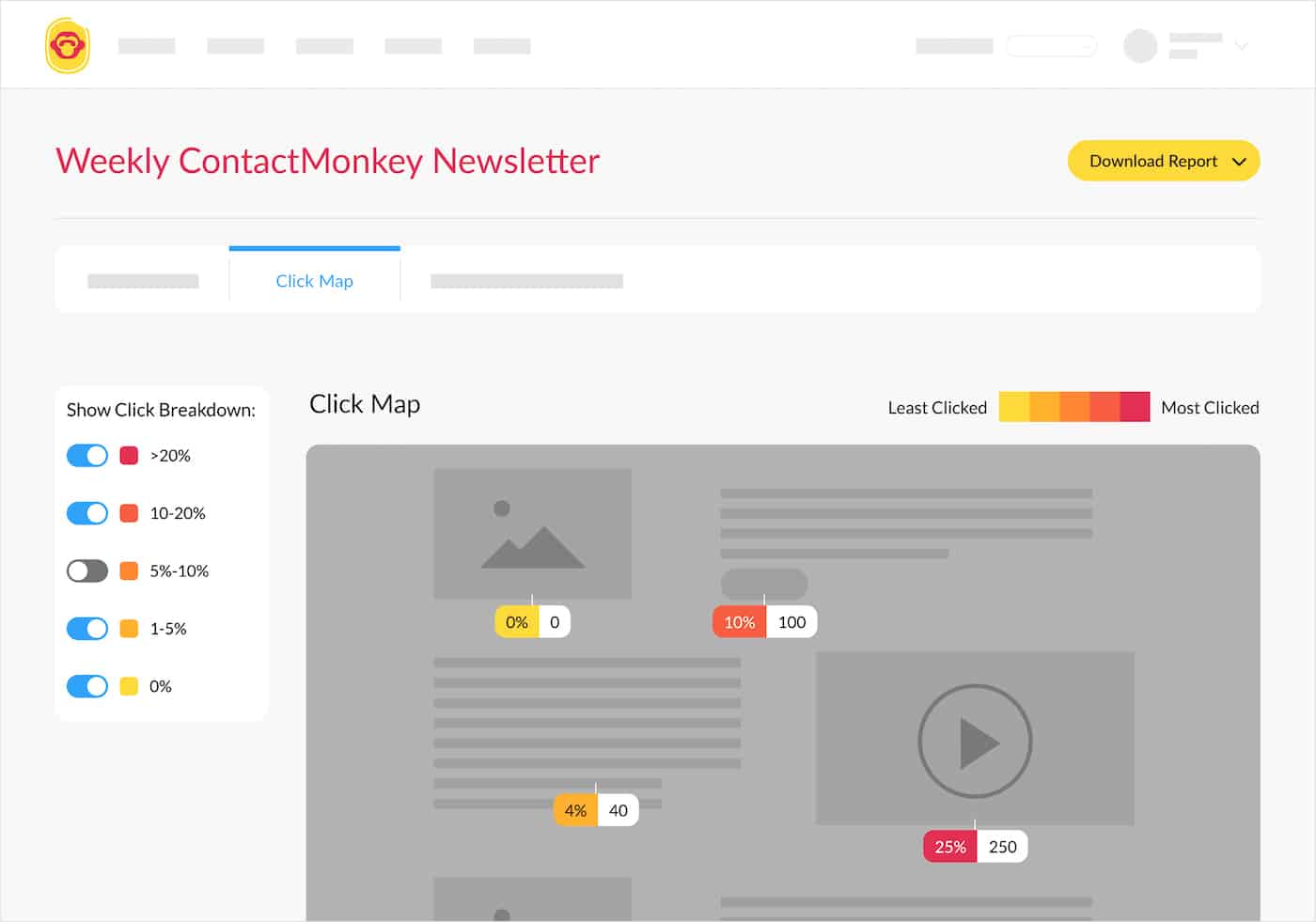
This information can help you optimize your email design to ensure your employees are seeing the information you need them to see.
When it comes to creating easy, engaging HTML newsletters, ContactMonkey is the best internal marketing tool for the task. Not to mention, it’s proven to save Mailchimp users up to 4 hours a week.
Another way to save time is to generate new ideas for your emails using ContactMonkey’s OpenAI ChatGPT integration. Simply provide a prompt and edit the generated text to fit your desired audience.
How can I simplify formatting HTML for Outlook?
With ContactMonkey, you get the same seamless drag-and-drop features of your favourite marketing tools. The added bonus: your newsletters always display correctly the first time. Plus there are also great ready-made internal communications email templates to choose from. Why waste time with tools you know aren’t going to work?
8. Marketing companies don’t onboard internal communicators
In terms of external vs internal marketing, Mailchimp, ConstantContact, and other marketing tools were designed for small-businesses and solo entrepreneurs. In order to keep costs cheap for these audiences, they skimp on the type of support enterprise-level users need.
That means no onboarding or installation support; you’re going to need a premium plan just to get someone on the phone. And support reps aren’t always equipped to help internal communications professionals.
Your Internal Comms team and IT department are on their own when it comes to setting up the marketing tool. If they have any questions along the way, they’ll have to figure it out alone.
Compare that to internal communication platforms that only work with enterprise clients. You’ll be able to talk to someone who understands the unique challenges internal communication professionals face.
Every ContactMonkey customer is a assigned a personal customer success manager, who will help you understand how to get the most out of our internal communications software. They’ll also work with you to develop a custom internal communications strategy to ensure you’re reaching your goals. Your CSM will review your progress and goals via monthly and quarterly check-ins to make sure you’re where you need to be.
Get Started with an Internal Marketing Tool
Maybe you’re already using a marketing tool for your internal communications and it’s working fine for you. Or maybe you didn’t even know there were email design tools designed specifically for internal communication vs external communication. Trying different innovative internal communication ideas can require different software solutions to make sure you have the right fit.
At ContactMonkey, each client has a dedicated Account Manager who will help you implement our internal communications software and offer training to ensure you’re successful with the platform. We’ll even put in the training up front with a free trial!


